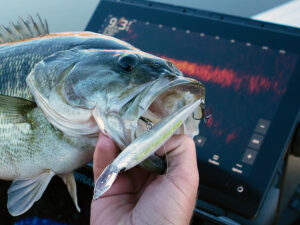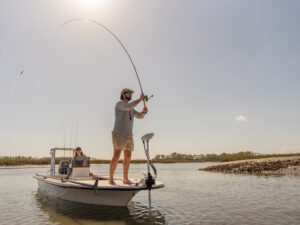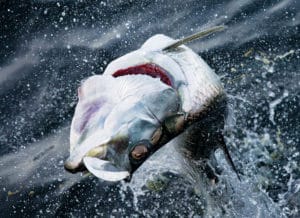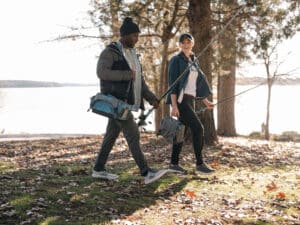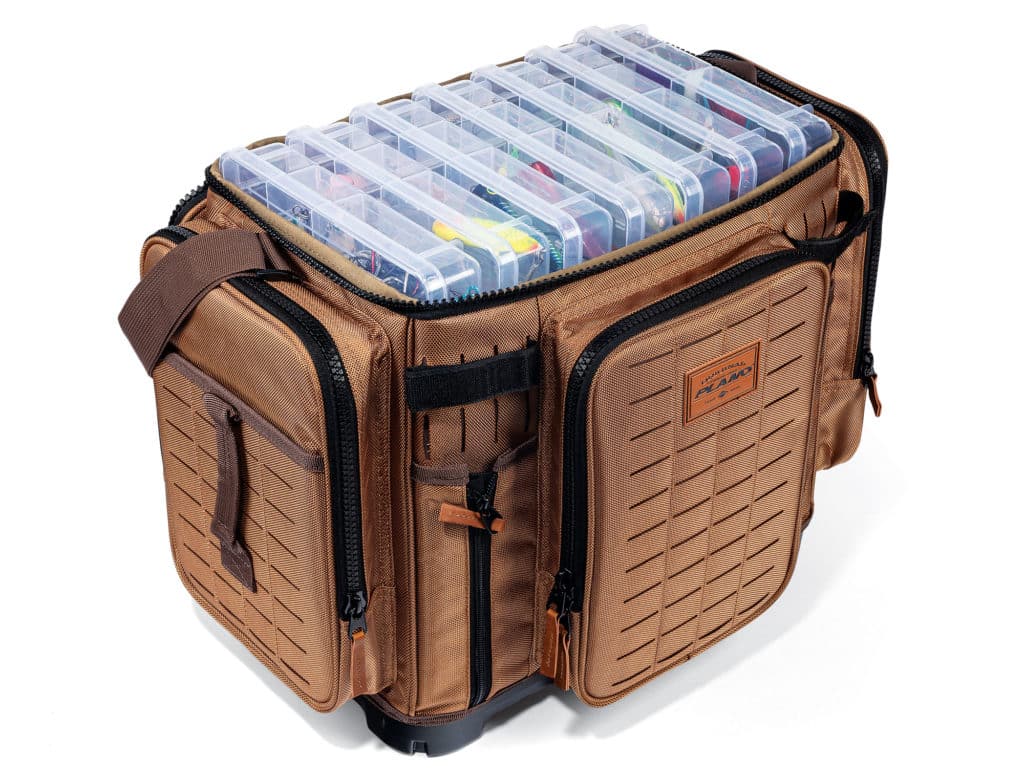
I grew up admiring my dad’s large, Walton Products Grip-Loc aluminum tackle box. Corroded by years of seawater, and difficult to open or latch, it was loaded with Japanese feather jigs, 16-ounce bank sinkers, 8-ounce Bridgeport diamond jigs, wooden Creek plugs and 21-ounce Solvkroken jigs. I struggled to lift and carry it to and from the car, but opening it each time was like a gift revealed on Christmas morning, and we caught everything from striped bass to cod and more with its contents.
Although it’s easy to wax nostalgic for those “good old days,” tackle carriers have come a long way since then.
Leading the latest tackle-box lineup are innovative soft-sided models offering anglers versatility, minimal weight, easy storage and numerous organizational features, plus they won’t crack or dent when bounced on the deck in a pounding boat. Moldable bodies and padded straps provide carrying comfort, and these bags compress when empty for easy storage.
“Whether surf fishing or offshore fishing,” says Chris Pardue, director of product development for Calcutta, “a lot of storage space is a must when picking out a tackle bag for saltwater fishing. The lures are typically large, and the assortment an angler may take is broad depending on the targeted species. And you need room for rigging accessories like leader wheels, terminal tackle and pliers.”
Tackle bags replace the hard-plastic construction with a rugged-but-light nylon fabric similar to that in high-quality backpacks. This also allows for shoving tackle bags into corners of a full vehicle trunk or boat locker without the need for space dedicated to a large, inflexible box.
“Tackle storage boils down to three main factors,” says Chris Russell, marketing manager for Plano Synergy: “versatility, function and durability. Some tackle bags look great but don’t stand up when put to the test, especially in relentless saltwater conditions. Some other bags offer toughness but are heavy or bulky enough to make working and traveling with them difficult. The perfect tackle-storage solution gives anglers a bag that’s easy to carry, holds all their gear, and allows anglers the versatility to customize each adventure based on tackle selection, size and trip magnitude.”
Making the right choice for a tackle bag that fits your needs can be a daunting task. Some industry and fishing experts weigh in here to help you make the right decision on important features.
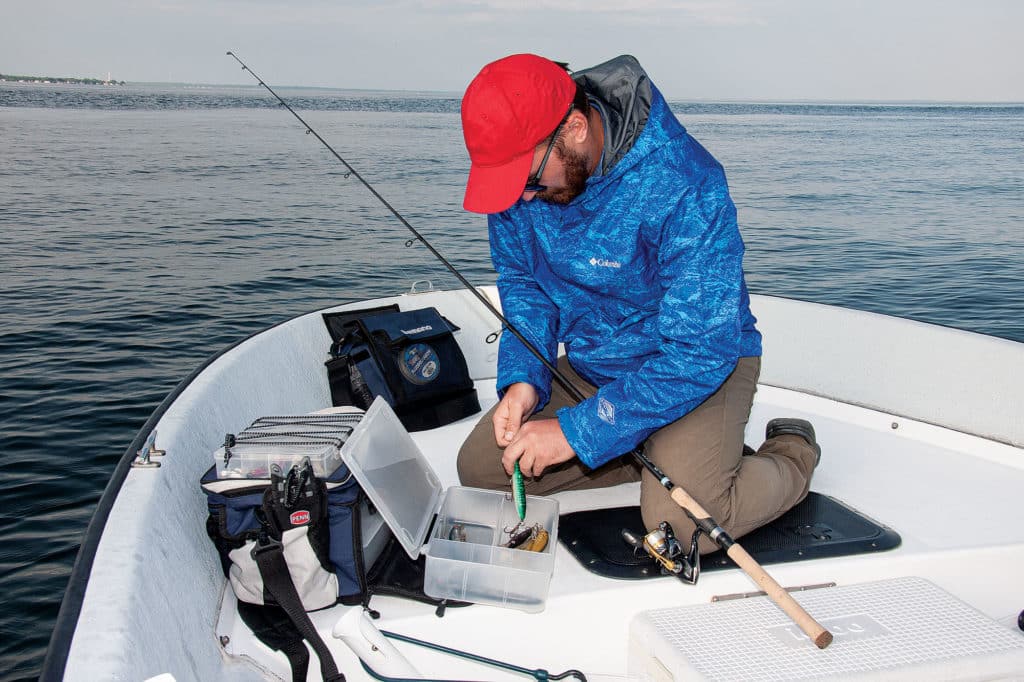
Water Resistance
Water resistance or waterproofness is important to prevent ruined cellphones, rusted tackle and soggy sandwiches. “The number-one feature I require in a tackle bag,” says Capt. Chris Elser, a pro with 30 years’ experience fishing trophy striped bass in western Long Island Sound (ct-fishing.com), “is for it to be extremely waterproof, including the closures.”
Quality Zippers
Together with a waterproof material, experts prefer a heavy-duty zipper to protect their valuable bag contents and function even when stressed or exposed to the salt environment.
“I like a high-tech, rugged zipper such as the one on my Simms bag,” Elser says. “That tops my list of important bag features.”
Capt. Danny Latham, a southwest Florida guide for more than 25 years (reelfishing.com), is also big on quality zippers. “For my saltwater needs, I carry a lot of gear in my boat bag and tend to overstuff the side pockets. That’s where good zippers come into play. Not only does the zipper need to handle the weight, but it also must stay shut under pressure.”
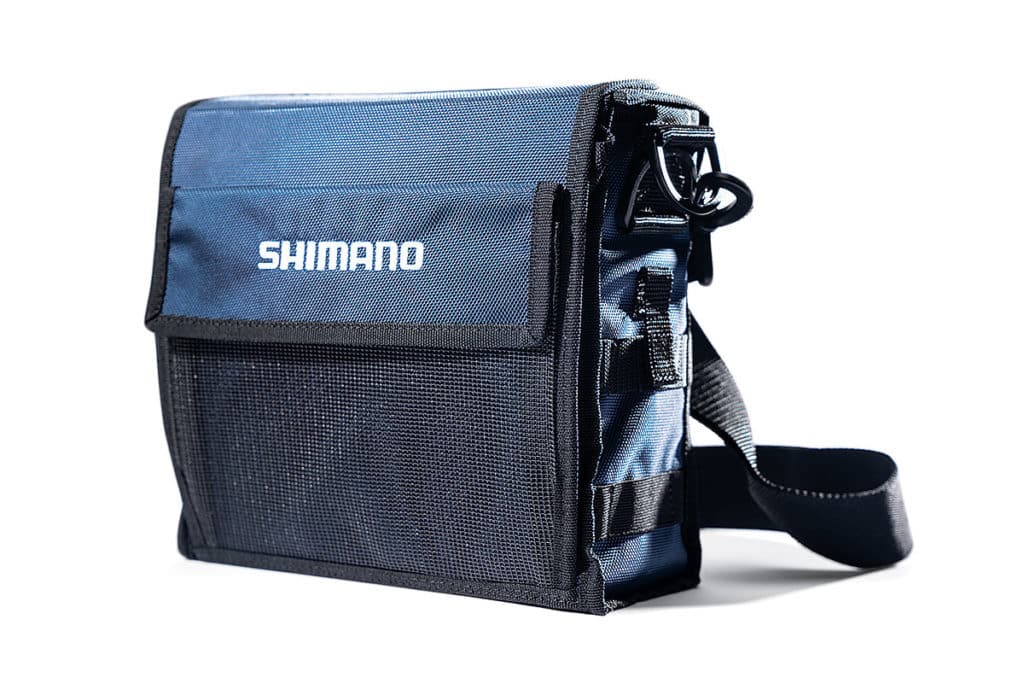
Durability and Design
“Tackle weighs a lot,” Latham adds, “and by the time you fill your bag, it can weigh more than 20 pounds. That puts stress on the bag, and if it’s made of cheap material, it will quickly fall apart. A tackle bag must be made of high-quality material, feature strong handles, and provide a comfortable carry strap that’s well-attached to the bag.”
Elser says that additional bag requirements include a durable setup that remains waterproof in any conditions. “Detachable boxes are nice in rain,” he says, “so you don’t have to open the main bag to access the lures you need. I also look for lots of attachments for tools via a docking-station layout. The bag also must be lightweight, and a magnetic-catch lid system is innovative and handy for quickly closing a bag.
“Soft tackle bags are easier to carry than tackle boxes,” Russell says, “and some, like the new Plano Guide Series 3700XL, even convert to a backpack to keep your hands free to manage rods and other gear as you head for the boat. The best bags incorporate a molded bottom for added strength, to stop water from seeping in, and to hold the bag upright.”
Organization
Most tackle bags employ transparent plastic utility boxes, which are quickly and easily removable for access when rigging or packing. An advantage of this system allows the angler to fill numerous utility boxes by tackle type, and then simply mix and match and switch them out rather than owning multiple tackle boxes.
According to Doug Rusch, one of Shimano’s main sales managers, organization is the key feature for any good tackle bag. Shimano’s Bluewave Surf Bag, for example, offers a unique divider feature as part of its main lure-storage area.
“This enables anglers to adjust dividers to hang nearly every size plug or lure,” Rusch says. “The Bluewave 250 features two rows of compartments to store and transport up to 16 large plugs. Both of our bags feature a front fold-down area to store lures, plus there’s a side compartment to hold a small terminal-tackle box. The bags also feature a durable rubber mesh bottom for fast drain and dry. It’s a perfect lure organizer for either beach or boat use.”
Read Next: Add Tackle Storage Trays
Besides storage, good tackle bags contain multiple pockets with cover flags to keep out water. These should be on at least three sides of the bag and designed for versatility. Elser adds that detachable lure and fly boxes are great, and he likes being able to have an extra set of tools directly on the bag, so a docking station is a good feature when choosing a bag.
“The new Dropzone in our Guide Series bags is my favorite innovative feature,” says Plano’s Russell. “Built-in, heavy-duty magnets allow you to drop tools, hooks and lures on the top of the bag, and not worry about them getting lost or flying off when moving. They hold tight and stay put.” He adds that having a magnetized area allows for quick tackle changes and easy cleanup.
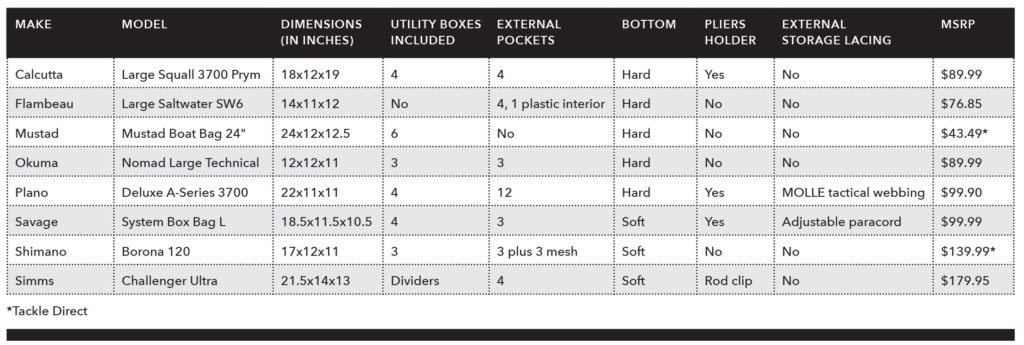
Carrying Strap
An obvious advantage of tackle bags over tackle boxes is the shoulder strap. A tackle bag’s carrying strap distributes the weight of the bag across the shoulder, which is easier on the body and leaves a hand free to carry rods or to grab railings.
Important features include an adjustable strap, heavy-duty nylon construction, sufficient width for weight distribution, padded shoulder point, and reinforced stitching at the attachment points.
“How handles are placed on a tackle bag is a huge item for me,” Latham says. “Over the years, I’ve had several bags rip at the handle attachment points. The carry strap is sometimes overlooked, but you’ll appreciate a wide, comfortable strap when you’re making a long walk to your boat or fishing spot. When you’re well-organized and have confidence in your gear, you can turn your full attention to catching.”

